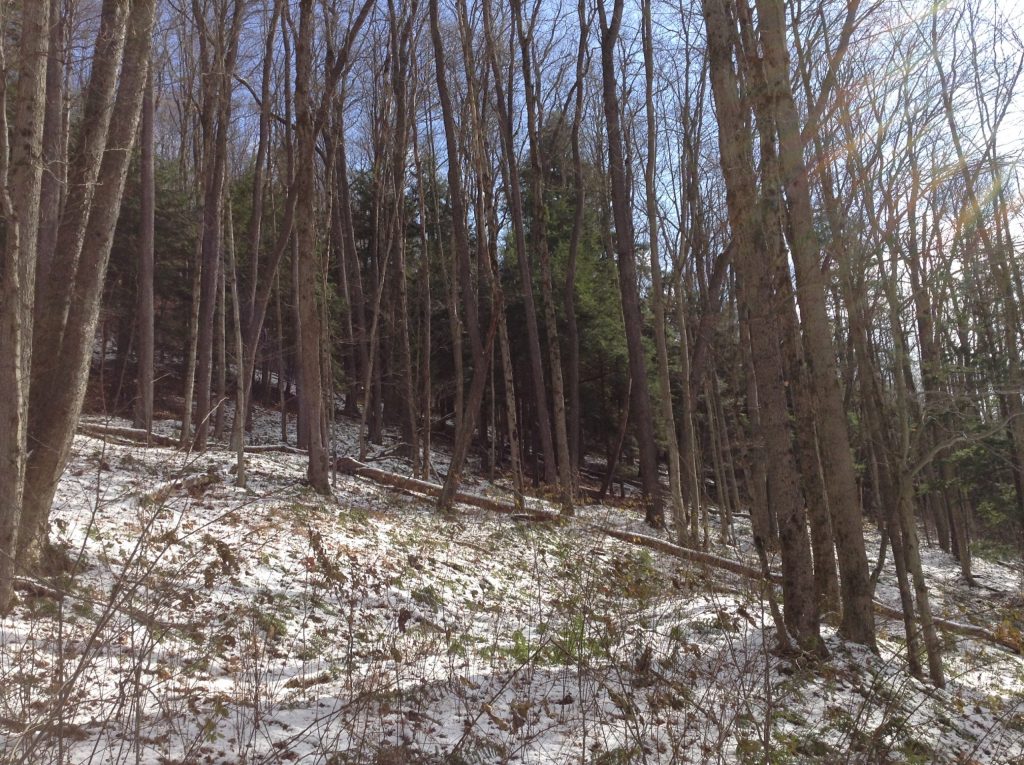Pennsylvania winters are no big deal for deer. From past research, we know that 95 percent of white-tailed deer will survive each winter month. While warm winter coats provide the first line of defense, it is actions that speak the loudest. Behavioral adaptations in response to winter weather really showcase how smart, tough, and amazing deer are.
On Tuesday, February 26, 2013, with a winter storm approaching, Buck 8503 headed west about a 1 mile to a secluded southwest facing slope with stands of hemlocks. By 10AM, he was settled and ready for the storm.
Over the next 3 days, about 7″ of snow would fall but the buck never budged.
From 10AM on Tuesday until 11PM on Friday (March 2nd), 8503 never traveled more than 250 yards. The hemlock stands that dot this hillside provided him with what he needed to weather the wind and snow. We visited this winter refuge last November and while there was about 2″ of snow on the ground, under those hemlocks it was nearly bare.
As the storm passed, 8503 resumed this normal travels. Over the weekend, he traveled nearly 4 miles to the east. After about a week there, he headed west again, past his hillside hemlocks, to his primary area 6.5 miles away where he would spend the rest of 2013.
This buck traversed miles within the 10 mile long oval which he called home sometimes in a few hours or few days. But when the snow started falling in late February, he headed straight to his hemlock hillside.
-Chris Rosenberry, Supervisor
PGC Deer and Elk Section
If you would like to receive email alerts of new blog posts, subscribe here.
And Follow us on Twitter @WTDresearch
